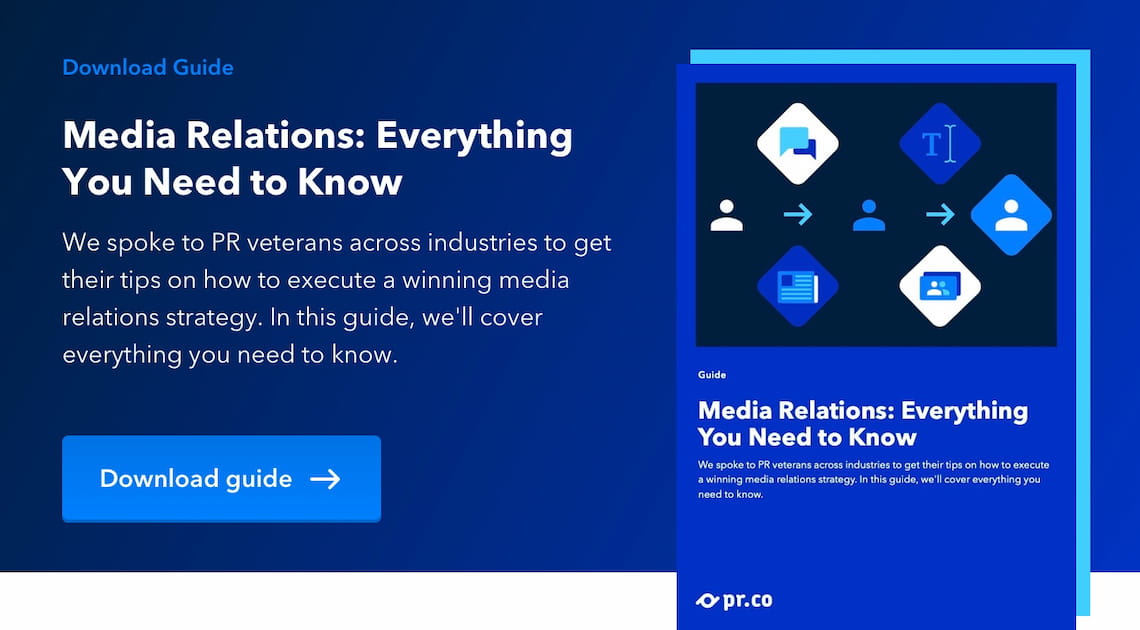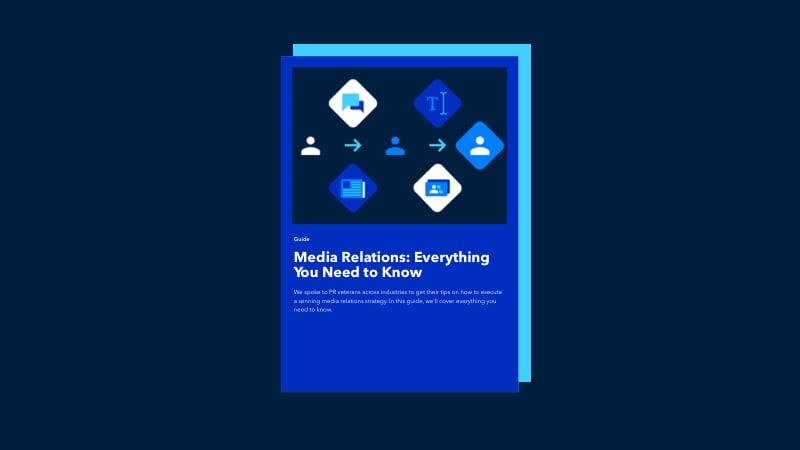As Global Director at Wunderman Thompson Intelligence, Emma Chiu has given strategic insight and trend consultancy for brands like Campari, Shiseido and Unilever. Here she outlines trends for 2020 and explains how Gen Z is shaping the future of communication.
.jpg?width=736&name=348754-markus-spiske-ZJ64TPcM14c-unsplash-6ddc0e-original-1583405203%20(1).jpg)
"As the Global Director of Wunderman Thompson Intelligence, one of the things I do is trends forecasting. We look at key consumer behavior, changes in lifestyle categories, and innovation across different industries.
I come from a creative background in graphic design, which is about understanding how to convey messages in different formats. I see the way we translate trends as the same thing. It’s a way of communicating what we're seeing now and using that insight to gain knowledge of what will happen next.
When you talk about the future, it doesn't feel very tangible. But that's not the case. When I was being trained in trend forecasting, I came across this quote from futurist William Gibson: “The future is already here, it's just not evenly distributed.” Our job is to evenly distribute it.
How would you explain trend forecasting to a layman?
We become aware of the future when we can make sense of what we're seeing now. By noticing patterns and using those as insights, you can have a good idea of what will happen next. For example, four or five years ago, we saw a wave of people focusing on health and well-being, so we put a report together on the subject.
Traditionally, health was largely connected to physical well-being. We noticed the shift in understanding health and well-being more holistically early on when it began to include other topics such as sleep or mindfulness.
In general, understanding trends is noticing the shifts in how people view things. And then getting in on that quickly to say: this is what brands need to start doing. It is being aware of what consumer mindsets and lifestyles are shifting towards.
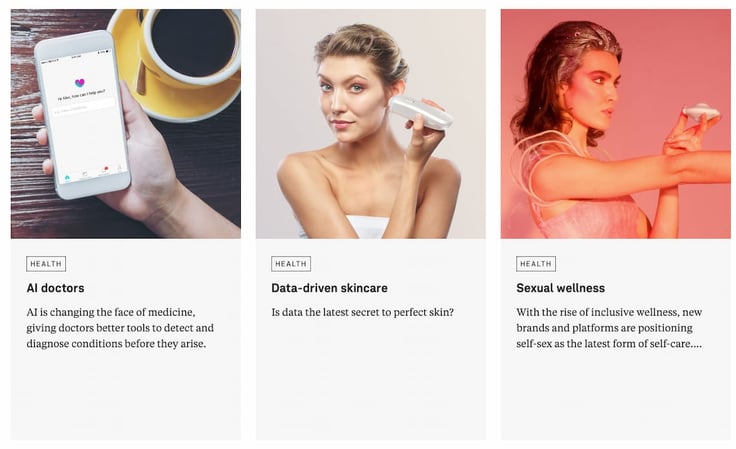
How far into the future can you predict?
I remember speaking to a Director at the MIT Design Lab on interpreting cultural trends and understanding behavior. Because of the pace that we’re developing and designing, it is harder to predict what technologies will exist in ten years. Instead, we can study the way we behave, which is more guaranteed.
Essentially, we are trying to learn about technology through people. All of our understanding of trends is rooted in consumer behavior. That's probably one of the most fascinating parts of my job.
In the past few years, we have seen how people are stepping up to all the political, economic, and social disruption. They are increasingly voicing in on how not only governments, brands, and companies should behave, but also CEOs or board members. If brands are not doing something that people value, people will just not buy into them.
I think this whole empowerment shift has been quite liberating. It also makes it very complicated, especially for a company that is there to inform other brands on how to behave and what to do. Because in the end, everyone has different opinions and a different voice.
The key thing is to understand is who our brands' core consumer groups are and what they believe. If it aligns with the brand's beliefs, it will strengthen the brand's core mission statement. This will be even more true of the next generations.
To say our industry changed during 2020 is an understatement. Here are the skills you need for the future of public relations.
They say Millennials and Gen Z have more in common with their peers abroad than they do with the older generation in their home countries. Do you think that's true?
Absolutely. I think Millennials have been very quick at adopting and utilizing technology. They've found a community that's beyond where they're living, within the digital community. They might be connected across far-flung countries and time zones but they probably have shared causes, beliefs, or interests. As for Gen Z, this will be even more amplified because of the way they see people. They believe they’re more equal to each other and don't respond to hierarchy in the same way previous generations did.
How has what people find appealing about branding and visual language changed from Millennials to Gen Z?
There is something different in the way Gen Z are influenced by the generations before. Generally what we've discovered is that because Gen Z are digital natives; designing and playing with filters, or utilizing tools online to be creative, is super normal.
We've classified them as the most creative generation to date because they have all the tools to allow them to create something that looks complete. Tools are more accessible to Gen Z than Millennials, for example. The way agencies are experimenting creatively with phones and computers is shaping a new type of aesthetic language that they will feel very comfortable with.
One thing we've been looking at is how they've really pushed the notion of beauty, for example, because they're used to using filters to create these avatars of themselves. What they think is beautiful may not be traditional beauty. And therefore, they're disrupting beauty itself.
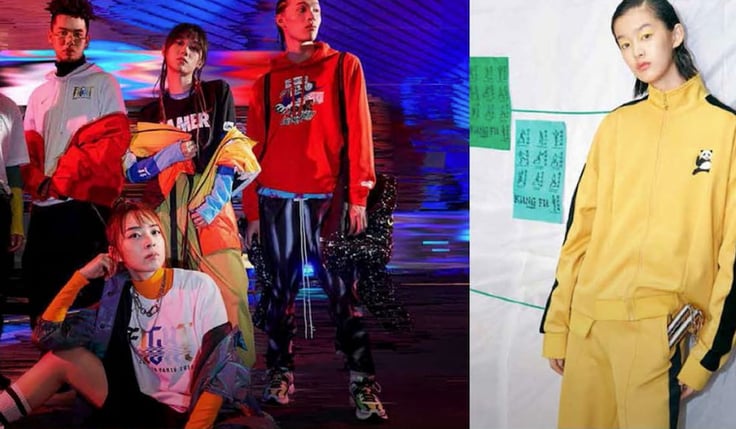
What do you find exciting about looking at trends?
It fills me with questions. How will people embrace certain technologies? How will people be shopping in the future? So many industries are being disrupted. Take luxury as an example. Brands like Gucci and Burberry are trying to attract younger audiences by changing their visual language. They don't resemble what they did before, which makes you question what luxury means in the modern-day.
You get to think about what the younger generation is interested in. A question we get a lot is: how much of certain behavior is going to continue versus what is a fad? We try to look for longevity in trends.
An example of something fleeting could be Pokemon GO. People might still be playing it, but there are nowhere near as many users as when it launched. Nevertheless, the app set off a whole different notion of health in gaming and how people can engage with augmented reality. This is something we can learn from.
Could you share some of your 2020 trend predictions?
When we examine trends for the year ahead, we try to look at things that we're noticing now and how they will be relevant not only for the year ahead but for the next couple of years.
For starters, we expect the brands that we buy into to have values and beliefs that we as consumers also believe in. What I've noticed, especially in the younger consumers in Gen Z is, they're more likely to drop a brand if a single campaign doesn't align with their values and beliefs.
With Millenials, point systems and discounting are more ingrained, whereas Gen Z are far more interested in the right values and transparency. Gen Z as a generation have been so critical of what our actions are versus what our thoughts are.
Around 90% of people want to live more sustainably for example. But when it comes to truly being more sustainable in everyday practice, they're not really doing so. But that thought turns into action with a bit of pressure.
We spoke to PR guru and founder of Spin Sucks, Gini Dietrich, on the future of PR. Read our full interview here.
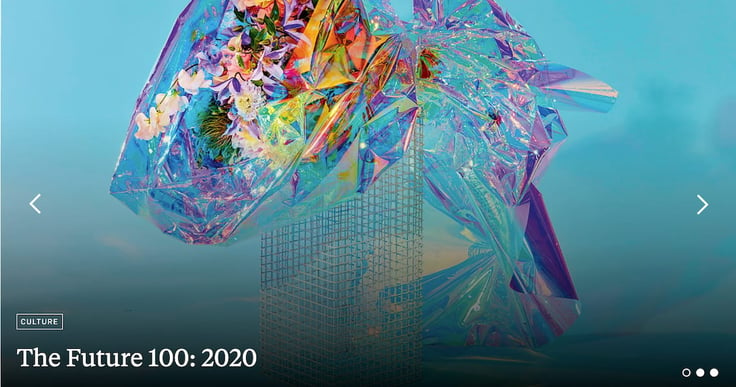
If all brands follow the same trends, isn't there a danger that we all create the same content?
That's why when we spot and look at trends, we try to be diverse about it. So, for example, if we are looking at the retail category, we try to look across other categories for influence and information too. Because the topics we cover are so broad and varied, we can tailor and distill all that information for individual brands.
So, for example, if we are working with an auto brand, we make sure they are learning about the health and well-being of their consumers too. Because when you're in a car, there are so many things involved in the experience, like road rage or music on the radio. So how can you potentially change the interior of a car to relieve a person of anxiety?
It's important for us to learn what the core strategy of a brand is so that we can extract the right consumer behavior and therefore information.
Communications are increasingly being tailored towards eliciting emotion. Do you think there will ever be a negative reaction to this type of advertising?
I think we're tugging at the heartstrings a little bit. We're going through what we were calling 'the anxiety economy' where everyone's feeling more anxious or worried about the future. Creating something that evokes deeper emotion is actually what brands are doing correctly.
As uncertainty continues to shift, I do think there is a place for brands to really celebrate optimism and a more positive future. Especially when Gen Z's are so young but are already met with a lot of mature problems, like climate change. I think brands have to participate by helping to reassure people.
Ultimately we are heading to a place that can offer optimism once certain problems have been solved. You can't just offer optimism without addressing things like your own carbon footprint, for example. If brands can solve these things in the next few years, they will be able to help celebrate a more positive future.
This piece is based on a conversation at OnBrand '19.
Emma Chiu is Global Director at Wunderman Thompson’s in-house futures and innovation think-tank, Wunderman Thompson Intelligence. There she collaborates with Fortune 500 companies, engaging in strategic planning and innovation projects for world leading brands like Campari, Shiseido, Unilever, Finnair and Northwell, among others. With a background as an art director and visual editor, Emma has over 10 years of experience in brand strategy.. Connect on LinkedIn or send an email





